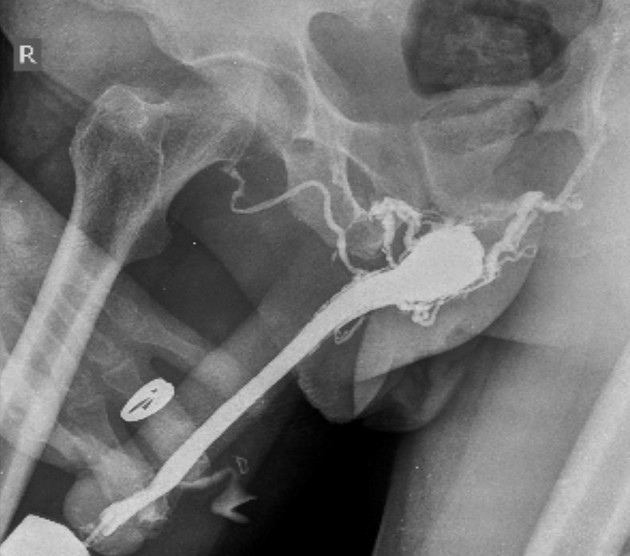Presentation
Polytrauma. Unsuccessful attempt at Foley catheter insertion
Patient Data

Contrast is administered retrograde into the urethra (retrograde urethrography). The contrast does not extend retrograde past the proximal bulbar urethra and there is venous intravasation into the penile venous plexus and pelvic veins.
Case Discussion
Venous intravasation is usually due to forced injection of contrast in the presence of urethral obstruction, such as with a high-grade stricture, spasm of the urethral sphincter, or urethral tear/transection. The contrast under increased pressure in the urethral lumen gains access to the adjacent veins through a mucosal tear and contrast enters the submucosal venous plexus. Subsequently, it can be seen in the penile and pelvic veins.
Intravasation should be differentiated from extravasation, especially in trauma patients, since extravasation implies urethral injury/tear/transection.




 Unable to process the form. Check for errors and try again.
Unable to process the form. Check for errors and try again.